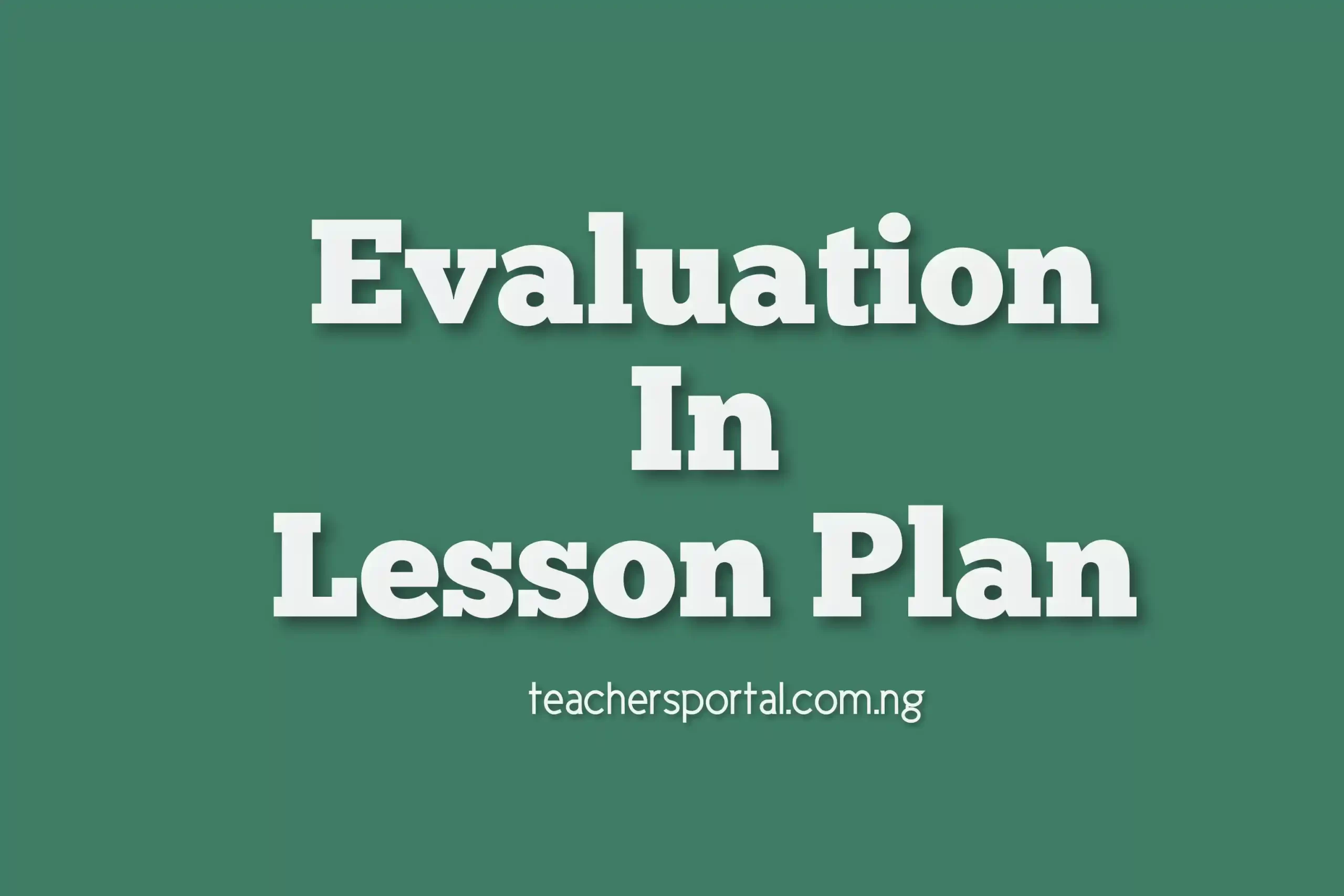

In this article, we will explore the meaning and significance of evaluation in lesson plans, highlighting its importance in facilitating effective teaching and learning.
In this article, we’ll be looking at how to write evaluation in a lesson plan.
Evaluation is an essential component of any well-designed lesson plan. It plays a vital role in assessing the effectiveness of teaching methods, measuring student learning outcomes, and providing valuable feedback for both educators and learners. By systematically evaluating the progress and achievements of students throughout a lesson, teachers can identify strengths and areas for improvement, adapt their instructional strategies, and ensure that educational objectives are met. In this article, we will explore the meaning and significance of evaluation in lesson plans, highlighting its importance in facilitating effective teaching and learning. Additionally, we will provide practical examples of how evaluation can be incorporated into lesson plans to maximize student engagement and foster academic growth. Whether you’re a seasoned educator looking to enhance your instructional practices or a novice teacher seeking guidance on effective evaluation techniques, this guide will provide valuable insights to help you write evaluations that effectively measure student performance and contribute to their educational success.
Evaluation in a lesson plan refers to the process of assessing and measuring students’ progress, learning outcomes, and the effectiveness of teaching methods and materials used during a lesson or instructional unit. It involves gathering evidence and information about students’ understanding, skills, and achievements in relation to the learning objectives set for the lesson.
Evaluation in a lesson plan typically includes various assessment strategies, such as:
1. Formative Assessment: This type of assessment is ongoing and occurs during the learning process. It helps teachers gauge students’ understanding and adjust their instruction accordingly. Formative assessments can include observations, questioning, quizzes, class discussions, and group work.
2. Summative Assessment: This assessment takes place at the end of a lesson, unit, or grading period to evaluate students’ overall learning outcomes. It is used to determine the level of achievement or mastery of the subject matter. Summative assessments can include tests, projects, presentations, portfolios, or exams.
3. Authentic Assessment: This type of assessment focuses on real-world tasks that assess students’ ability to apply knowledge and skills in practical contexts. Examples of authentic assessments include simulations, role-plays, case studies, and performance tasks.
Evaluation in a lesson plan serves several purposes:
Evaluation is a crucial step in the lesson planning process as it enables teachers to assess whether their students have successfully achieved the intended learning objectives and whether the lesson itself was effective. During the evaluation phase, the objectives of the lesson are put to the test, typically through the use of questions or tasks for the students to complete. These questions should align with the stated objectives of the lesson, ensuring that teachers evaluate all the behavioral objectives they set out to accomplish.
Unlike the traditional approach of having a separate evaluation phase, the new lesson planning methodology suggests integrating evaluation throughout the entire lesson. This means that teachers continuously assess the quantity and quality of the behavioral objectives being met through both summative and formative evaluation techniques. By doing so, teachers can gather ongoing feedback on their students’ progress and adjust their teaching strategies accordingly.
When designing evaluation methods, it is essential for teachers to employ the same action verbs used in stating the objectives. This consistency ensures that the assessment aligns with the desired outcomes and provides a clear measure of student achievement.
To illustrate the evaluation process, here are some examples of how it may begin, depending on the behavioral objectives and activities:
Define: Students are asked to provide concise and accurate explanations or descriptions of specific concepts or terms related to the lesson.
Draw: Students are given the task of creating visual representations or diagrams that demonstrate their understanding of key concepts or relationships.
Recite: Students are required to verbally recall or repeat important information or ideas covered in the lesson, demonstrating their comprehension and retention.
These evaluation methods, among others, can provide teachers with valuable insights into their students’ learning progress and help them make informed decisions regarding instructional adjustments or additional support, if necessary.
These examples use action verbs such as describe, name, solve, write, discuss, give, perform, identify, interpret, and role-play, explain, identify, compare and contrast, demonstrate, analyze, construct, evaluate, justify, create, and critique. By incorporating a range of action verbs in evaluation tasks, teachers can assess different cognitive skills and depth of understanding among students.